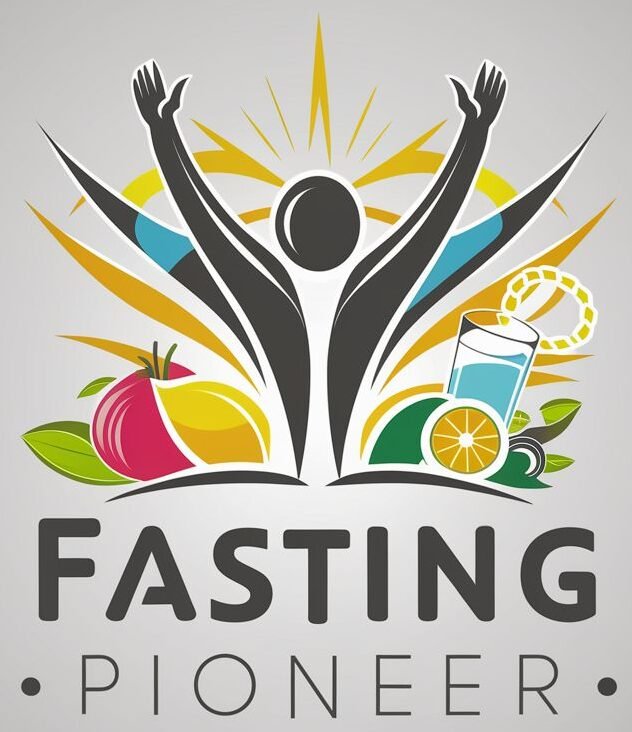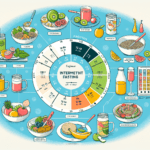So you’ve heard about this thing called intermittent fasting, but you’re not exactly sure what it entails or how to get started. Well, you’ve come to the right place. In this beginner’s guide to intermittent fasting, we’ll break down the basics and give you all the information you need to know to embark on this potentially life-changing dietary journey. From different fasting methods to potential benefits and tips for success, we’ve got you covered. Get ready to learn about the fascinating world of intermittent fasting and discover how it can boost your health and well-being.

What is Intermittent Fasting?
Definition
Intermittent fasting is a dietary approach that alternates between periods of fasting and eating. It is not necessarily focused on what you eat, but rather when you eat. This eating pattern has gained popularity due to its potential health benefits, including weight loss, improved insulin sensitivity, and reduced inflammation.
Different types of intermittent fasting
There are several different ways to practice intermittent fasting, each involving different fasting and eating windows. Some common types include:
- 16/8 method: This method involves fasting for 16 hours and restricting eating to an 8-hour window. It is often referred to as the Leangains protocol.
- 5:2 diet: On two non-consecutive days of the week, you restrict calorie intake to 500-600 calories, while eating normally on the remaining days.
- Alternate-day fasting: This approach involves fasting every other day, with some variations allowing for limited calorie consumption on fasting days.
- Eat-Stop-Eat: You fast for 24 hours once or twice a week, abstaining from food for a full day.
- Warrior Diet: With this method, you fast for 20 hours and eat one large meal during the remaining 4-hour window.
It’s important to choose an intermittent fasting protocol that suits your lifestyle and preferences.
Benefits of Intermittent Fasting
Weight loss
One of the main reasons people turn to intermittent fasting is its potential for weight loss. By restricting the eating window, you naturally consume fewer calories, which can create a caloric deficit leading to weight loss. Additionally, fasting helps regulate hormones like insulin and growth hormone, which play a role in fat metabolism.
Improved insulin sensitivity
Intermittent fasting has been shown to improve insulin sensitivity, which is crucial for managing blood sugar levels. When you fast, the body uses up stored glucose, allowing insulin levels to decrease. This can be especially beneficial for people with insulin resistance or type 2 diabetes.
Reduced inflammation
Chronic inflammation is linked to various health conditions, including obesity, heart disease, and certain cancers. Intermittent fasting has been found to reduce markers of inflammation in the body, potentially lowering the risk of these inflammatory diseases.
How Intermittent Fasting Works
The fasting and feeding window
Intermittent fasting involves dividing your day or week into fasting and feeding windows. During the fasting period, you consume no or very few calories, while the feeding window is when you eat your meals. By limiting the time available for eating, you naturally reduce overall calorie intake.
Effects on hormones and metabolism
When you fast, your body undergoes specific hormonal and metabolic changes. For instance, the levels of growth hormone increase, promoting fat burning and muscle gain. Insulin levels decrease, allowing stored fat to be released. Additionally, cellular repair and gene expression related to longevity are stimulated during fasting periods.

Getting Started with Intermittent Fasting
Choosing an intermittent fasting protocol
To get started with intermittent fasting, it’s important to choose a protocol that suits your lifestyle and preferences. Consider factors such as your daily routine, work schedule, and social commitments. The 16/8 method is a popular choice for beginners, as it is relatively easy to incorporate into daily life.
Preparing mentally and physically
Before starting intermittent fasting, it’s essential to prepare yourself mentally and physically. Understand that the first few days might be challenging as your body adjusts to the new eating pattern. Stay hydrated, eat balanced meals during the feeding window, and gradually increase the length of your fasting periods to allow your body to adapt.
Creating a fasting and eating schedule
To establish a fasting and eating schedule, decide on the duration of your fasting window and when you want to have your meals. Some people prefer to have an early dinner and skip breakfast, while others skip dinner and have breakfast the next day. Experiment with different timings to find what works best for you.
Meal Planning and Food Choices
Healthy and balanced meals
While intermittent fasting does not restrict specific food groups, it’s important to focus on consuming nutritious and balanced meals during the eating window. Include plenty of fruits, vegetables, whole grains, lean proteins, and healthy fats in your diet. Avoid excessive processed foods, sugary snacks, and unhealthy fats.
Foods to include and avoid during fasting and eating windows
During the fasting period, stick to calorie-free beverages like water, black coffee, and herbal tea. Avoid consuming any food or beverages that contain calories, as this can break your fast. During the eating window, incorporate nutrient-dense foods, complex carbohydrates, lean proteins, and healthy fats into your meals to support overall health.
Managing Hunger and Cravings
Tips to control hunger
It’s normal to experience hunger during the fasting period, especially in the beginning. To help manage hunger, stay adequately hydrated, as thirst can often be mistaken for hunger. Consuming foods high in fiber and protein during the eating window can also help keep you feeling fuller for longer. Engaging in light physical activity or distracting yourself with non-food related activities can also help take your mind off hunger.
Dealing with cravings
Cravings for certain foods can be common while practicing intermittent fasting. To manage cravings, practice mindful eating during the feeding window, and include foods that you enjoy in moderation. If cravings become overwhelming, try distracting yourself with a different activity or find healthier alternatives to satisfy your cravings.
Exercise and Intermittent Fasting
The best time to exercise
Determining the best time to exercise while practicing intermittent fasting depends on personal preference and individual goals. Some people prefer exercising during the fasted state, as it may enhance fat burning. Others prefer to exercise during the eating window to have fuel readily available. Experiment with different timings and listen to your body to find what works best for you.
Types of exercises to consider
Incorporating regular physical activity into your routine can complement the benefits of intermittent fasting. Include a mix of cardiovascular exercises, such as walking, jogging, or cycling, along with strength training exercises to build muscle mass. Choose activities that you enjoy and are sustainable in the long term.
Common Mistakes to Avoid
Not staying hydrated
Staying hydrated is crucial during intermittent fasting. Drink water throughout the day to prevent dehydration and to help manage hunger. Fruit-infused water or herbal teas can add flavor without adding calories to your fasting period.
Skipping meals to compensate
Intermittent fasting is not an excuse to skip meals or restrict calorie intake excessively. It’s important to consume enough calories and nutrients during the feeding window to support overall health and well-being. Listen to your body’s hunger and fullness cues and focus on nourishing yourself adequately.
Overeating during eating windows
While intermittent fasting can create a caloric deficit and promote weight loss, overeating during the eating window can counteract this effect. Be mindful of portion sizes and maintain a balanced diet during your eating window. Prioritize nutrient-dense foods over empty calories to optimize your health.
FAQs about Intermittent Fasting
What can I consume during fasting periods?
During the fasting periods, you should consume only calorie-free beverages such as water, black coffee, plain tea, and herbal teas. Avoid adding sugar, cream, milk, or any other additives that contain calories, as they may break your fast.
Can I continue taking medication while fasting?
It is important to consult with a healthcare professional before starting intermittent fasting, especially if you are taking any medication. They can advise you on whether fasting might impact the effectiveness or absorption of your medications.
Conclusion
Summary of key points
Intermittent fasting is an eating pattern that alternates between fasting and eating periods. It has gained popularity due to its potential benefits, including weight loss, improved insulin sensitivity, and reduced inflammation. Different types of intermittent fasting, such as the 16/8 method or the 5:2 diet, allow for flexibility based on individual preferences and lifestyle.
Getting started with intermittent fasting involves choosing a protocol, mentally and physically preparing yourself, and creating a fasting and eating schedule. It’s important to focus on consuming healthy and balanced meals during the eating window, while staying hydrated and managing hunger and cravings.
Exercise can be incorporated into intermittent fasting, with options to exercise in the fasted state or during the feeding window. However, individual preferences and goals should guide the timing and type of exercise chosen.
Common mistakes to avoid include neglecting hydration, skipping meals to compensate, and overeating during the eating window. Finally, familiarize yourself with FAQs and consult a healthcare professional if you have any concerns about medication and fasting.
Encouragement to try intermittent fasting
Intermittent fasting can be a sustainable and flexible approach to improve health and promote weight loss. By following the guidelines, staying mindful of your food choices, and adapting the fasting pattern to suit your lifestyle, you can harness the potential benefits of intermittent fasting. Give it a try and see how it can positively impact your overall well-being.








